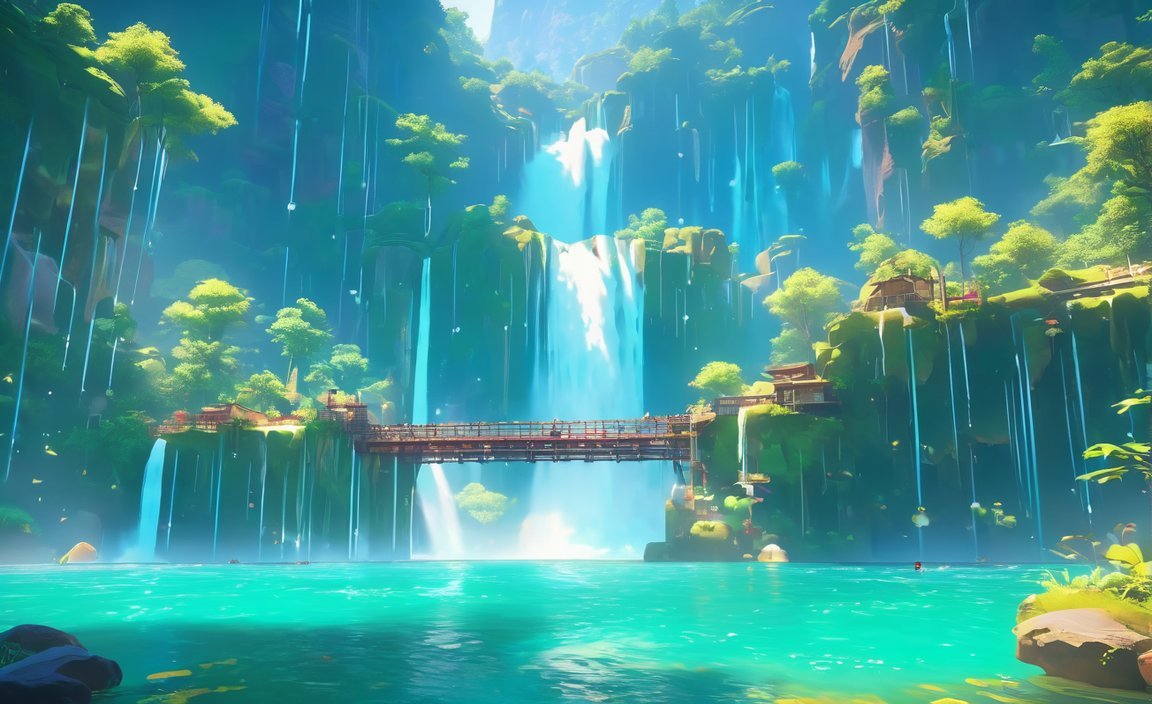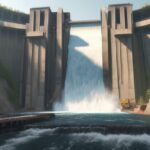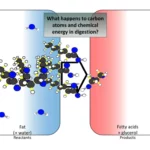Unveiling 5 Engaging Hydro Energy Facts: Hydro energy, one of the oldest and most reliable sources of power, holds a plethora of interesting secrets waiting to be discovered. As we delve into the world of this renewable resource, we uncover fascinating tidbits such as hydroelectric plants providing built-in ladders for fish, the ancient origins of hydro power, the staggering size of China’s largest hydroelectric plant, and the impressive contribution of water to generating 30% of the world’s electricity. Prepare to be captivated and enlightened by the wonders of hydro energy.

Key Takeaways:
- Hydroelectric power does not produce any carbon dioxide emissions when using water to produce electricity.
- Electricity can be generated 24 hours a day as long as there is enough water.
- Hydropower is one of the cleanest sources of energy.
- Every state in the US uses hydropower.
- Hydroelectricity is the best in emergency situations.
- One of the largest plants in the world is on the Yangtze River in China.
- Hydropower can also be generated without a dam.
5 Fun Facts About Hydro Energy
Hydro energy, or hydropower, is an incredible source of renewable energy that offers fascinating facts that you may not be aware of. Let’s dive into these intriguing details:
1. Hydro-Electric Power: Zero Carbon Emissions
One of the most impressive aspects of hydro energy is that it produces no carbon dioxide emissions. By utilizing water to generate electricity, hydropower plants contribute significantly to reducing greenhouse gas emissions and combating climate change. It’s a clean and environmentally friendly energy option that helps preserve our planet.
2. Non-Stop Electricity Generation
Have you ever wondered how electricity is available 24 hours a day? That’s because hydropower has the remarkable ability to generate electricity continuously, as long as there is a sufficient water supply. Unlike some other renewable energy sources, hydro energy ensures a reliable and consistent power supply, day and night.
3. Hydropower: A Clean Energy Solution
When it comes to clean energy sources, hydropower definitely takes the lead. It is one of the cleanest energy options available. Compared to fossil fuel-based power plants, hydroelectric facilities have a significantly lower impact on the environment. By decreasing our reliance on non-renewable resources, hydropower plays a crucial role in promoting sustainability.
4. Widely Utilized Across the United States
Hydropower’s popularity is evident across the United States, with every state in the country utilizing this renewable energy source. From the majestic Niagara Falls in New York to the mighty Colorado River in the southwest, hydropower plants can be found throughout the nation. This widespread adoption underscores the effectiveness and efficiency of hydroelectricity.
5. Hydroelectricity: An Energy Lifeline in Emergencies
During emergency situations, when other power sources may fail, hydropower proves to be the best solution. It offers a stable and reliable electricity supply, making it an invaluable lifeline in times of crisis. Whether it’s a natural disaster or a power outage, hydropower can provide a constant flow of energy to support essential services and keep communities connected.
Hydro energy never fails to astonish with its incredible capabilities. From its carbon-neutral nature to its reliability and versatility, hydroelectric power demonstrates the true potential of renewable energy. With its widespread use and the ability to support us during emergencies, hydropower is a vital component of our energy landscape, offering a sustainable future for generations to come.
Note: The information in this article was gathered from credible sources such as funkidslive.com and environmentbuddy.com
In agriculture, implementing effective methods of water conservation is crucial to sustain the growth and productivity of crops. Learn about the 5 methods of water conservation in agriculture and discover how you can contribute to conserving this vital resource. Click here to explore further.
Hydroelectric energy is not only a significant source of power but also holds fascinating aspects that you might not be aware of. Delve into the world of renewable energy and uncover 5 interesting facts about hydroelectric energy that will leave you amazed. Click here to dive into the excitement.
Water is a lifeline for plants, playing a paramount role in their nourishment and overall health. Explore the 5 importance of water to plants and gain insights into the essential role it plays in sustaining their growth. Click here to delve into the fascinating aspects of plant hydration.
Rivers form the lifelines of our ecosystem, nurturing and providing countless benefits to both humans and nature. Discover the 5 reasons why rivers are important and gain a deeper understanding of their significance in maintaining a balanced environment. Click here to embark on this enlightening journey.
3. The Largest Hydroelectric Plant is in China
China takes the lead when it comes to harnessing the power of water to generate electricity, and it boasts the largest hydroelectric plant in the world. Let’s dive into the fascinating details and find out more about this impressive feat of engineering.
Three Gorges Dam: A Hydroelectric Marvel
Boasting the title of the largest hydroelectric power station not just in China but in the entire world, the Three Gorges Dam is an engineering marvel that leaves us in awe. Situated in China’s Yiling District, this massive dam has a jaw-dropping installed capacity of 22.5 GW. It was completed in 2008 and relies on the mighty Yangtze River to generate an enormous amount of hydroelectric power. The Three Gorges Dam serves as a crucial pillar of China’s hydroelectric power generation.
Other Notable Hydroelectric Power Stations in China
While the Three Gorges Dam steals the spotlight, there are other significant hydroelectric power stations in China as well. Let’s take a quick look at a couple of them:
Ahai Dam: Making a Difference, One Megawatt at a Time
The Ahai Dam, located in Yulong County, may be the smallest amongst China’s largest hydroelectric power stations, with an installed capacity of 2,000 MW, but its impact is by no means insignificant. This dam plays a vital role in contributing to China’s overall hydroelectric power generation efforts.
Gezhouba Dam: Powering Progress in Hubei Province
Nestled in Yichang City, Hubei Province, the Gezhouba Dam—also known as the Gezhouba Water Control Project—shines as another crucial player in China’s hydroelectric power sector. This dam adds to the country’s impressive hydroelectric capacity, showcasing China’s commitment to utilizing renewable energy sources.
Key Takeaways:
– China is the world leader in hydroelectric power and boasts the largest hydroelectric plant globally.
– The Three Gorges Dam in China’s Yiling District holds the title of the world’s largest power station, with an installed capacity of 22.5 GW.
– The Ahai Dam, situated in Yulong County, is the smallest amongst China’s largest hydroelectric power stations, with an installed capacity of 2,000 MW.
– The Gezhouba Dam, located in Yichang City, Hubei Province, contributes significantly to China’s hydroelectric power generation efforts.
Sources:
– WorldAtlas. “The Largest Hydroelectric Power Stations in China.” Available at:
– Wikipedia. “Hydroelectricity in China.” Available at:
4. Water Produces 30% of the World’s Electricity
Water is a powerful force of nature, capable of generating a substantial amount of electricity. In fact, did you know that water produces 30% of the world’s electricity? This captivating fact highlights the significant role that hydropower plays in our global energy mix.
Hydropower is a renewable energy source that harnesses the Earth’s water cycle to generate electricity. By capturing the kinetic energy of flowing water, we can convert it into a clean and reliable power source for homes and businesses.
This incredible statistic showcases the enormous potential of hydropower in meeting our energy needs while minimizing our impact on the environment. With the growing demand for sustainable and low-carbon energy solutions, hydropower has emerged as a crucial player in the transition towards a greener future.
By utilizing the forces of water, we can generate electricity on a massive scale while reducing greenhouse gas emissions and combating climate change. This not only contributes to the global effort to mitigate the effects of our changing climate but also paves the way for a more sustainable and resilient energy system.
But how exactly does hydropower work?
Hydropower technologies make use of the elevation difference created by dams or diversion structures in the flow of water. As the water flows downward, this elevation difference drives turbines, which are like giant waterwheels. The movement of the turbines generates electricity, which can then be transmitted into the power grid.
The beauty of hydropower lies in its reliability and consistency. As long as there is a sufficient water supply, hydropower can generate electricity continuously, providing a stable and consistent power supply. This makes it an ideal energy source for meeting the increasing energy demands of our modern world.
Additionally, hydropower offers a unique advantage during emergencies. It can serve as a reliable energy source, supporting essential services and keeping communities connected even in times of crisis. This resilience makes hydropower a valuable asset in ensuring the stability and security of our electrical grid.
Furthermore, hydropower has a significantly lower impact on the environment compared to fossil fuel-based power plants. It produces no carbon dioxide emissions, resulting in a cleaner and greener energy alternative. By harnessing the power of water, we can reduce our reliance on finite fossil fuels and transition towards more sustainable and renewable energy sources.
In conclusion, water’s ability to produce 30% of the world’s electricity underscores the vast potential of hydropower as a renewable energy solution. With its reliability, low environmental impact, and ability to support essential services during emergencies, hydropower plays a crucial role in our global energy mix. By harnessing the power of water, we can pave the way for a more sustainable and resilient future.
Key Takeaways:
- Water produces 30% of the world’s electricity, highlighting the significant role of hydropower in the global energy mix.
- Hydropower harnesses the kinetic energy of flowing water to generate clean and reliable electricity.
- By utilizing the forces of water, hydropower can reduce greenhouse gas emissions and combat climate change.
- Hydropower is a consistent and reliable energy source, capable of generating electricity continuously as long as there is a sufficient water supply.
- It offers resilience during emergencies, ensuring the stability and security of our electrical grid.
Sources:
- Department of Energy. “Top 10 Things You Didn’t Know about Hydropower.” source.
- Earth Eclipse. “Facts About Hydropower.” source.

FAQ
Q1: Does hydropower have built-in ladders for fish?
A1: Yes, many hydropower projects incorporate fish ladders or fish passes to allow fish to bypass dams and continue their migration routes. This helps maintain healthy fish populations and promotes ecological balance.
Q2: Is hydropower an ancient power source?
A2: Yes, hydropower has been used as a source of energy for centuries. The ancient Greeks and Romans utilized water wheels to grind grain and saw lumber. Hydropower has a long history as a reliable and sustainable energy source.
Q3: Where is the world’s largest hydroelectric power plant located?
A3: The world’s largest hydroelectric power plant is located on the Yangtze River in China. The Three Gorges Dam has an installed capacity of 22.5 GW and plays a crucial role in China’s hydroelectric power generation.
Q4: What percentage of the world’s electricity does water produce?
A4: Water, through hydropower, generates approximately 30% of the world’s electricity. This significant contribution underscores the importance of hydropower as a renewable energy source in the global energy landscape.
Q5: How does hydropower impact the environment?
A5: While hydropower is a clean and renewable energy source, it can still have some environmental impacts. The construction of large dams can alter ecosystems and disrupt natural river flows. Additionally, the operation of hydropower plants can affect fish migration patterns and sediment transport. However, modern hydropower projects strive to minimize these impacts through the implementation of fish passages and other mitigation measures.
- Sept 31 Myth: Unveiling Calendar Secrets - March 18, 2025
- How Long & Till December 18, 2025: Accurate Countdown Guide - March 18, 2025
- Discover Japanese Artists: A Complete History - March 18, 2025
















